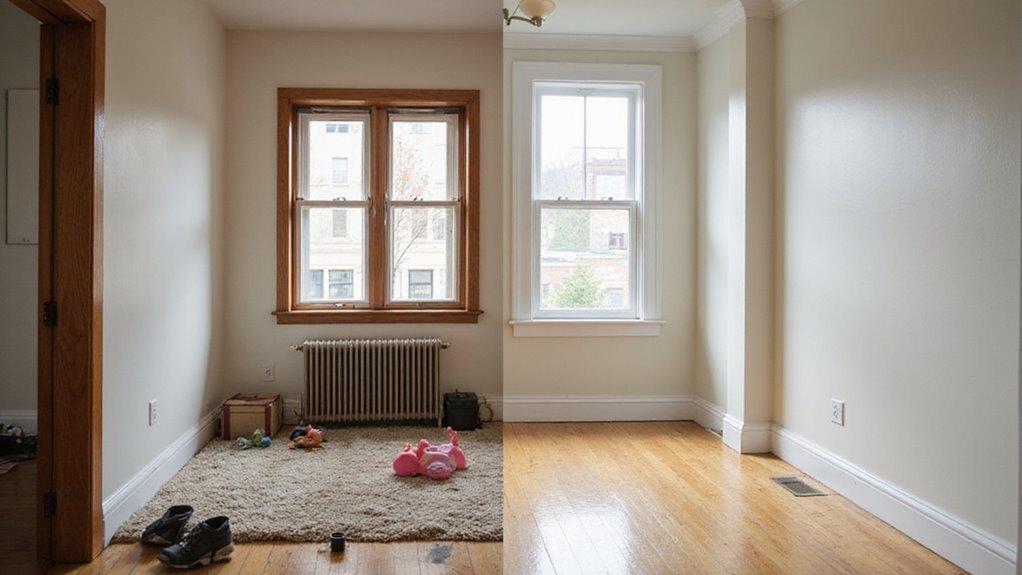Deciding whether to sell a rental property with tenants or leave it vacant can be stressful for landlords. Each option has its own set of challenges and benefits. Picking the wrong approach could cost you time and money.
Buyers may want a property with tenants for instant rental income, but this can make showings harder and limit your buyer pool. On the other hand, selling a vacant property is often easier, but it can lead to extra expenses and possible vandalism.
Many landlords struggle to choose the best path. The best choice depends on your goals, market demand, and the condition of your rental. This blog will compare both options so you can make a smart, profitable decision. Keep reading to get step-by-step advice and tips for your situation.
Key Takeaways
- Selling occupied properties attracts investors seeking rental income but limits appeal to owner-occupants who want immediate move-in.
- Vacant homes allow for easier showings, faster closings, and wider buyer interest, especially from owner-occupants.
- Tenant-occupied sales provide ongoing rental income during listing, but can complicate scheduling and reduce staging opportunities.
- Legal compliance is stricter with tenants; proper notice and respecting lease terms are required to avoid delays or disputes.
- Well-maintained, vacant properties typically sell faster and for higher prices due to better presentation and buyer flexibility.
Understanding the Basics of Selling Occupied Properties

Selling a rental property with tenants is possible, but it involves specific rules. Existing lease agreements must be respected until they end or are canceled. If you want to sell, you must follow these legal requirements. It’s important to gather and provide all the essential documents for FSBO sales to ensure a smooth transaction and legal compliance.
Sellers must give tenants advance notice before showings. Landlords must keep the property safe and respect tenant privacy during the process. If you ignore these duties, you may face legal problems or delays.
Buyers and appraisers consider the lease terms and rent amount when valuing the property. Sales can take longer if tenants still live there. If the buyer wants to move in right away, having tenants may be a problem.
Selling with tenants might attract investors who want steady rental income. Owner-occupants may be less interested if they cannot move in immediately. If you want a quick sale, you may need to wait until the lease ends.
It’s also important to ensure all legal disclosures are completed accurately when selling a property with tenants, as errors can cause delays or disputes.
Key Considerations When Selling Vacant Rentals
When you sell a vacant rental, you’ll need to focus on staging to maximize property appeal and attract potential buyers. Data shows well-staged homes can sell up to 73% faster, but you must also factor in increased security and ongoing maintenance costs. Balancing these elements is critical to protecting your investment and optimizing your sale outcome.
Additionally, investing in depersonalizing and staging the property can further enhance buyer interest and help showcase the home’s best features. Improving your curb appeal can also speed up the selling process and make a strong first impression on buyers.
Staging and Property Appeal
A vacant rental is easier to show, but it may not look appealing to buyers. Empty rooms highlight every flaw and make spaces feel cold. If you want to attract buyers, you should consider staging the home.
Staged homes help buyers imagine living there. The National Association of Realtors says staged homes sell faster and for higher prices. Good staging can make a big difference in both speed and sale price.
Curb appeal is also important. If the yard looks messy or the paint is chipped, buyers might lose interest right away. First impressions matter, so tidy landscaping and fresh paint can help.
The table below shows how buyers might react to different conditions:
| Staged & Inviting | Bare & Cold | Poor Curb Appeal |
|---|---|---|
| “Feels like home” | “Needs work” | “Uncared for” |
| Higher offers | Lower offers | Fewer showings |
| Quick sale | Stale listing | Lost interest |
Security and Maintenance Costs
Vacant rental properties often cost more for security and maintenance. Empty homes are easier targets for theft and vandalism. Owners must consider these risks before listing a property.
Insurers usually see vacant homes as higher risk. Insurance premiums may rise, or coverage could become limited. If there is no tenant, you may need extra protection.
Unattended homes can develop problems like leaks or mold. If these issues go unnoticed, they can become expensive to fix. Regular inspections and landscaping are necessary to keep the property in good shape.
Owners must pay property taxes even if the home is empty. If you cannot cover these costs, vacancy may not be worth it. Carefully weigh these expenses before deciding to leave a property vacant.
Attracting Investors With Tenant-Occupied Homes
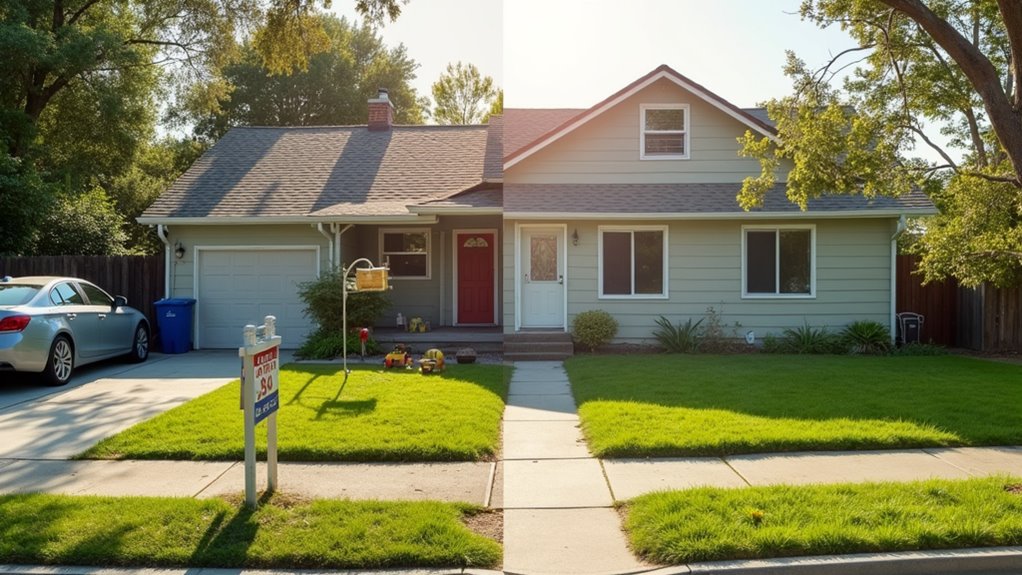
Selling a rental property with tenants attracts more real estate investors. Investors want steady cash flow and less risk of vacancy. Tenant-occupied homes give buyers immediate rental income. For investors considering FSBO, having a good tenant history can further highlight the property’s strengths by demonstrating reliable occupancy and payment patterns.
If a property has a good tenant history, buyers can see clear data on rent payments. This data helps them check property value and expected returns. Reliable records make it easier for investors to decide.
Tenant-occupied homes also cut costs for buyers. There is no need to spend money on finding new tenants or making repairs before renting. If you sell with tenants, you appeal to experienced investors who want quick, stable income.
Additionally, selling a rental property with tenants in place can help buyers avoid market perception issues that sometimes arise with vacant or neglected homes.
Appealing to Owner-Occupants With a Vacant Listing
When you list a rental property vacant, you make showings far more flexible and convenient for potential buyers. Data shows that owner-occupants are drawn to homes they can picture as their own, and a move-in ready space accelerates decision-making. You’ll also increase appeal by giving buyers a blank canvas to visualize their personal style, which can lead to stronger offers.
For sellers facing financial challenges, listing a vacant home makes it easier to work with cash home buyers, who can purchase properties quickly and as-is, providing a streamlined solution during difficult times. Additionally, selling a vacant property allows for greater transparency in closing costs, since there are fewer complications from tenants and the process is typically more straightforward.
Easier Showings for Buyers
Vacant homes are easier for buyers to see. Buyers can visit without waiting for tenants or complicated schedules. This often makes your property more attractive in the current market.
If a home is vacant, showings can happen any time, including evenings or weekends. Inspections and appraisals are also faster and simpler. This flexibility may help your property sell more quickly.
Homes with easy access tend to attract serious buyers who are ready to act. Faster sales can reduce the costs of property taxes and insurance. If you want fewer delays, listing a vacant home is a smart choice.
Move-In Ready Appeal
A vacant rental property is attractive to many buyers who want a home they can move into right away. Most people do not want to wait for tenants to leave or deal with moving schedules. If a property is empty, new owners can settle in quickly and easily.
Buyers often prefer homes that are ready without extra steps or delays. The National Association of Realtors reports that 78% of buyers seek move-in ready homes. This means selling a vacant property can draw more interested buyers.
Vacant homes also make inspections easier, since inspectors do not need to work around tenants. Inspectors can check all areas freely and thoroughly. This can help buyers feel confident and lead to faster offers.
If you market your property as move-in ready, you make it stand out from homes with tenants. Owners do not have to worry about existing leases or complications. This can lead to a smoother and quicker sale.
Visualizing Personal Touches
Vacant properties make it easier for buyers to imagine adding their own personal touches. Buyers can see the space clearly and picture their own furniture and style. If the home is empty, it acts like a blank canvas.
A vacant listing removes distractions from someone else’s belongings. Buyers can focus on the home’s true features without clutter. They may start thinking about how they would use each room.
If buyers visualize themselves living there, they can feel more emotionally connected. The opportunity to customize the space becomes obvious. According to the National Association of Realtors, 82% of buyers find it easier to imagine a property as their future home when it is empty or staged.
Navigating Showings and Access With Tenants
Showing properties with tenants inside can be tricky. You must respect their privacy and follow rules in the lease or local law. If you do not, you risk upsetting tenants or facing legal trouble. Most areas require you to give 24 to 48 hours’ notice before entering a rented unit. Some tenants may feel uneasy about frequent showings, which can make scheduling hard. Written notice helps keep things clear for everyone.
When arranging showings, ensure you are complying with necessary housing regulations to avoid legal conflicts during the process. If you communicate clearly and document requests, you lower the chance of disputes. Always keep a record of access requests and tenant responses. Careful planning helps balance buyer interest with tenant rights. If you are selling a property you inherited, it’s important to coordinate with all inheritors and the named executor to avoid conflicts over access and sale decisions.
Staging and Presentation Advantages of Vacant Units
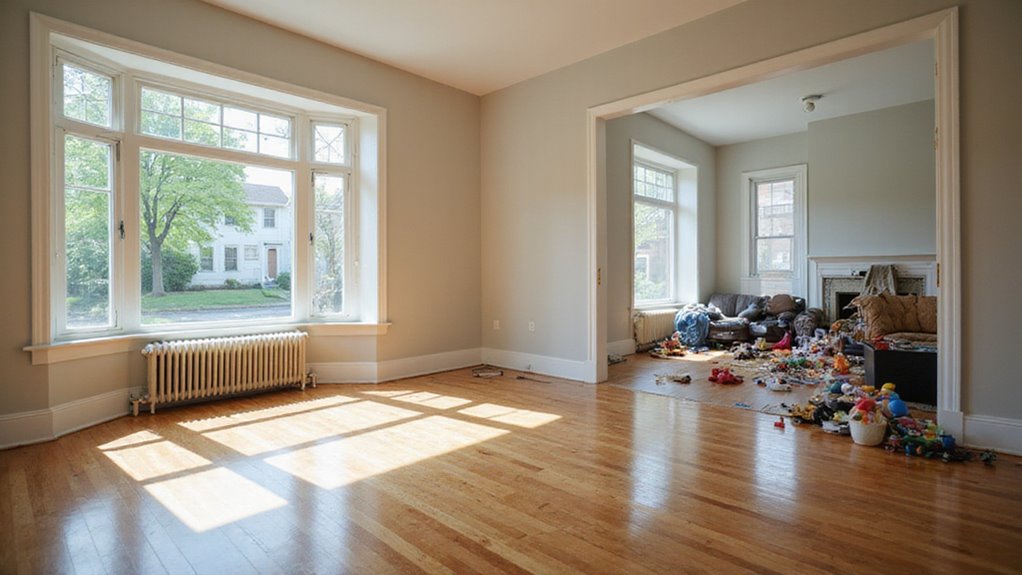
Vacant units make staging and presentation easier. Buyers can see the home’s true size and potential without distractions. If the unit is empty, you can use furniture and décor to show off the best features. Vacant homes let buyers see true potential and size, making it easier to highlight a property’s best features with staging.
Staged vacant homes often sell faster and for higher prices. Industry data shows these homes sell 73% quicker and for up to 10% more. If you stage a vacant home, you have more control over how it looks. By focusing on curb appeal improvements, you can further enhance the property’s attractiveness and create a strong first impression for buyers.
Owners can keep the property clean and free of odors. You can also manage lighting, temperature, and air quality for every showing. If you want buyers to picture themselves living there, a neutral and tidy space helps.
These advantages make vacant units more appealing to a wide range of buyers. If you want to improve your property’s marketability, consider staging it when empty.
Additionally, selling a vacant unit can make it easier to highlight selling in as-is condition to potential cash buyers, streamlining the transaction and reducing the need for last-minute repairs or negotiations.
Rental Income and Cash Flow During the Sale Process
When you sell a tenant-occupied property, you’ll maintain steady cash flow from ongoing rent collection throughout the listing period. In contrast, a vacant unit generates no income and exposes you to holding costs like mortgage payments, utilities, and insurance. Evaluating these financial impacts is crucial for determining your optimal sales strategy.
Selling a property with a clear title can also improve your chances of a smooth and timely transaction, helping you avoid unforeseen legal complications that could disrupt your cash flow. Sellers should also consider that Owensboro KY home values have increased by 5.3% over the past year, which may influence the timing and profitability of their decision.
Ongoing Rent Collection Benefits
Ongoing rent collection provides steady income while your property is for sale. This income can help cover your regular expenses. It also keeps your finances stable during the sales process.
If you have good tenants and manage the property well, rent payments are more likely to arrive on time. Consistent payments mean you can pay for management, repairs, and utilities without worry. These conditions make the selling process smoother.
A property with reliable rental income often attracts more buyers. Investor-buyers may prefer homes with tenants already in place. They can start earning returns right away if they buy your property.
Vacant Property Holding Costs
Vacant property holding costs are the expenses you must pay while your property is empty. If you list your property without tenants, you lose rental income. This loss can affect your monthly cash flow.
You will need to pay property taxes, insurance, and utilities like water, gas, and electricity. These costs are your full responsibility without tenant payments. If your area has high utility rates, your expenses may increase.
The National Association of Realtors says homes usually stay on the market for 30 to 60 days. A longer sale period means you pay these costs for more time. You should check your local market’s average days on market.
Vacant properties can attract vandalism or develop maintenance problems. If these issues occur, your costs may rise even more. Always calculate total holding costs before deciding to list your property vacant.
Potential Tenant Challenges and Legal Protections
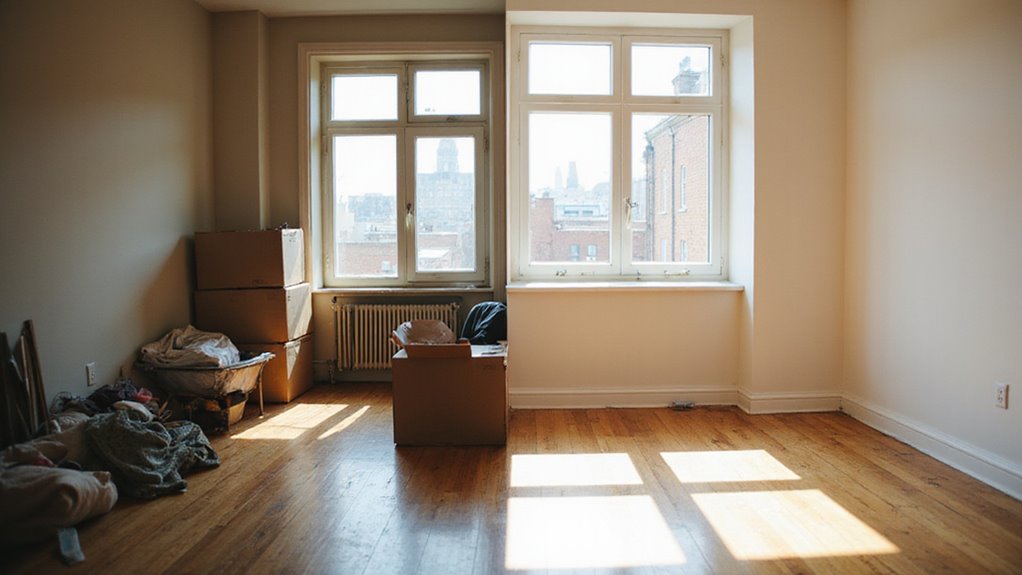
Selling a rental property with tenants can create challenges and legal risks. Tenants may refuse showings, deny access, or dispute the sale. If you ignore the law or lease terms, you may face lawsuits or delays.
Landlords must give written notice before entering the unit, as required by local law. All contact with tenants should be documented. Lease agreements and tenant screening records should be reviewed before starting the sale.
If you communicate clearly and keep good records, you can avoid most problems. These steps also protect you legally and help the sale go smoothly. Always check state and local rules before taking action.
It is also important to review the mortgage loan types you have on the property, as certain loans may include prepayment penalties or other terms that could impact the sale process.
Addressing Property Condition and Maintenance Issues
Addressing property condition and maintenance issues is important when selling a rental property. Good maintenance can increase your property’s value and attract more buyers. Poor condition or deferred repairs can lower your selling price.
You should check every part of the property, including both structural and cosmetic features. Well-maintained homes often sell faster and for higher prices. Industry data shows they sell 10-15% quicker and get better offers.
A maintenance schedule helps you keep records of repairs and improvements. If you have tenants, coordinate with them for inspections and repairs. For empty units, you can finish projects faster without tenant schedules.
A clear history of maintenance can reassure buyers during their checks. This record shows buyers the property has been cared for. If you provide this, you may see stronger offers and quicker sales.
Impact on Sale Price: Occupied vs. Vacant
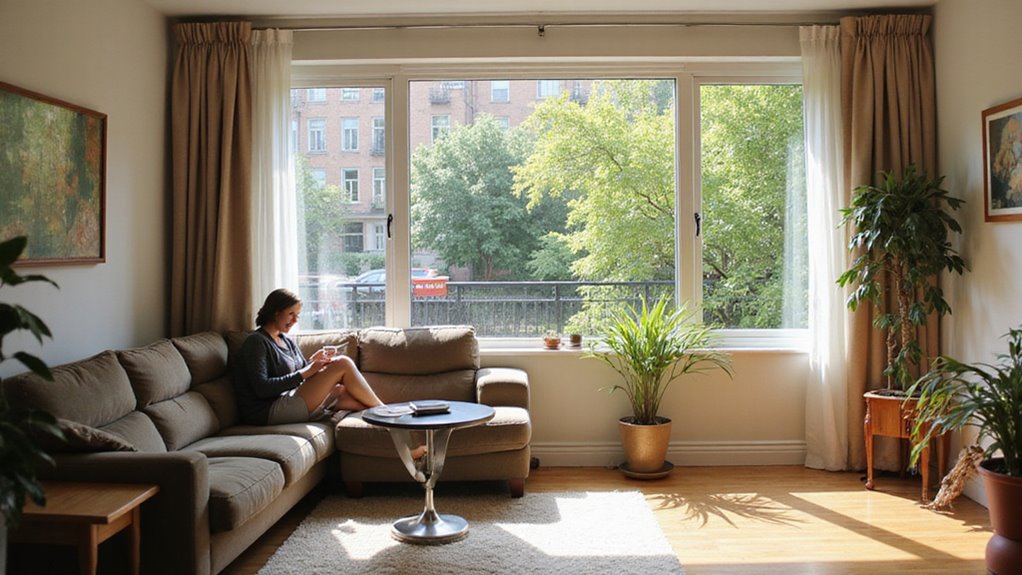
Selling your rental property while it is vacant can often lead to a higher sale price. Vacant homes attract more buyers and are easier to show. An occupied property may appeal to investors, but it can limit your buyer pool.
Market demand plays a big role in the sale price. Vacant homes usually sell for more in a strong market. Occupied homes may sell for less because showings are harder to arrange.
Tenant reliability can increase your property’s value for investors. A good payment history and long-term tenants make the property attractive. Investors like the promise of stable rental income.
Presentation also affects the final price. Buyers can picture themselves living in a vacant home more easily. This can result in better offers for your property.
Timing the Sale for Maximum Profit
You’ll maximize your returns by aligning your sale with peak market seasonality and the end of your tenant’s lease. Data shows properties listed in spring or early summer often command higher prices and faster sales. By timing your listing to avoid overlap with an active lease, you reduce complications and appeal to a wider pool of buyers.
Market Seasonality Trends
Real estate markets change during different times of the year. Understanding seasonality helps you choose the best time to sell for more profit. If you want to maximize your sale, you should pay attention to these trends.
Spring and early summer usually have more buyers. Properties often sell faster and at higher prices during these months. If you list then, you may get more offers.
You should look at past sales data to find busy selling periods in your area. Check how many homes are for sale to see if it is a seller’s or buyer’s market. If you want your property to stand out, adjust your timing based on these market changes.
Good timing can help you sell quickly and get the best price. If you use seasonality to your advantage, you may achieve better results.
Lease Expiration Alignment
Timing your sale with the end of a tenant’s lease can increase your profits. If you sell when the lease ends, you can attract both investors and people who want to live in the home. This gives you access to a larger group of buyers.
Homes often sell faster when empty, according to Zillow data. However, you may lose rental income during the time the property is vacant. If you renew the lease before selling, you attract buyers who want rental income, but you limit your buyer pool to investors.
You should check the average time homes stay on the market and local vacancy rates. If you analyze these numbers, you can choose the best time to list your property. This approach helps you reduce income loss and reach more buyers.
Marketing Strategies for Each Scenario
Marketing strategies for occupied and vacant rental properties depend on their unique advantages. Occupied properties attract investors by offering steady rental income. Vacant properties appeal to buyers wanting flexibility or a place to live. Occupied rentals entice investors with income stability, while vacant homes attract buyers seeking flexibility or a new residence.
If selling an occupied property, highlight its stable cash flow and reliable tenants. Investors often prefer properties with tenants in place. Emphasize reduced risk of vacancy during economic changes.
For vacant properties, showcase immediate move-in options and potential for new lease agreements. Professional staging can help buyers imagine living there. Flexible occupancy terms may attract both investors and homeowners.
Adjust pricing based on current mortgage rates and taxes to stay competitive. Price changes can help attract your ideal buyer. If market conditions shift, review your strategy to maintain interest.
Handling Lease Agreements and Tenant Rights
You must handle lease agreements and tenant rights carefully when selling a rental property. Doing this helps prevent legal issues or financial losses. Reviewing each lease will show if it is fixed-term or month-to-month.
Buyers usually inherit current leases and must follow their terms. Proper communication with tenants about the sale and their rights is important. Clear information helps avoid misunderstandings or disputes.
If you want tenants to cooperate, you could offer incentives like help with moving or lower rent during showings. Always put any agreements in writing to protect both sides. Following local laws will keep you in compliance and reduce risks.
Evaluating Your Local Market and Buyer Demand
You should check your local market and buyer demand before listing your property. If you know the market conditions, you can set a better price. This step helps you decide when and how to sell.
Market saturation shows how many similar homes are for sale. Many listings mean you may need to lower your price or improve your property. Fewer listings could mean less competition for your home. If lots of similar homes are for sale, you may need to lower your price or make improvements to stand out.
Sales data and days-on-market tell you about buyer interest. Fast sales and high prices often mean strong demand. Slow sales may suggest you need to adjust your strategy.
You should look at recent sales of similar homes and local rental trends. If you watch inventory levels, you will see how many vacant or tenant-occupied homes compete with yours. Adjust your price based on how fast homes are selling in your area.
Conclusion
If you are deciding whether to sell your rental property vacant or occupied, consider the pros and cons of each option. If your property is occupied, you may attract investors but could face limited showings. If your property is vacant, you can reach more buyers but might face higher costs and risks.
If you need a fast and simple sale, companies like ours buy houses for cash. This can help you avoid the challenges of managing tenants or waiting for the perfect buyer. You can save time, reduce stress, and move forward with your plans.
If you are ready to sell your rental property, we at OC Real Estate can help. We offer cash offers and a smooth process. Contact us today to see how we can make selling your property easier.
